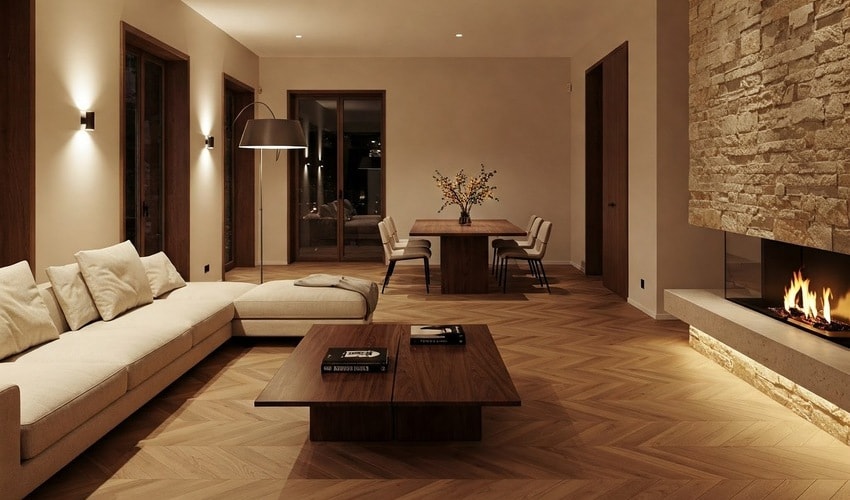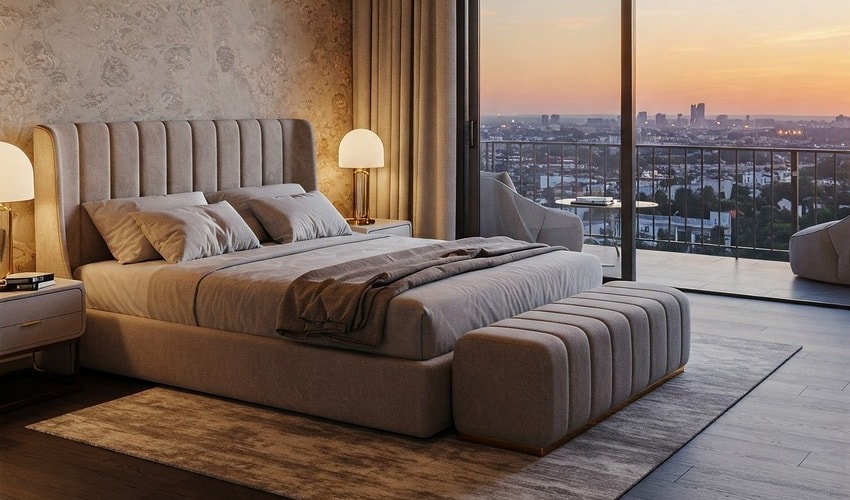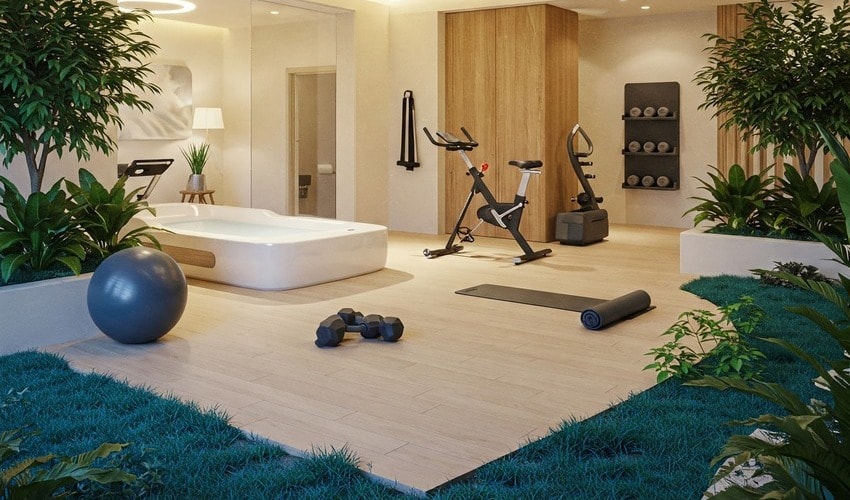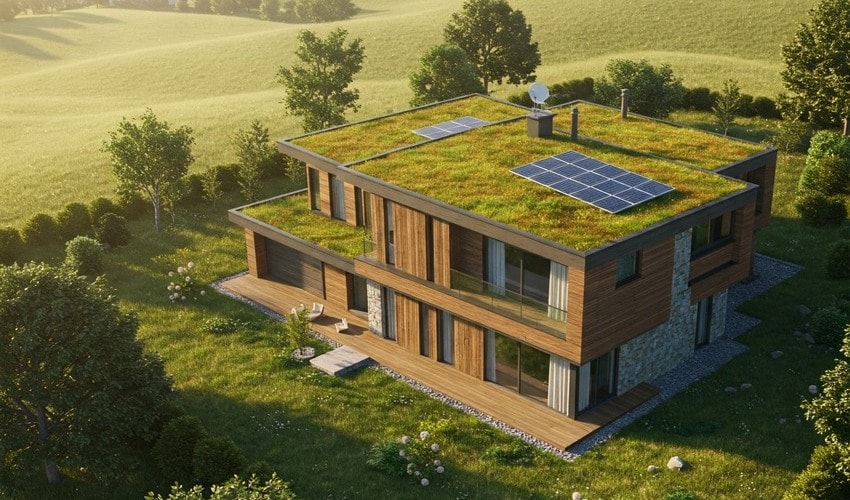Crafting Opulence: The Luxury of Space in Architecture and its Psychological Impact

Table of Content
In the world of real estate, luxury is more than just a price tag—it's an experience. The psychology of luxury design plays a crucial role in crafting spaces that not only exude opulence but also inspire and uplift those who inhabit them. Understanding the nuances behind luxury design is essential for creating environments that resonate with the emotions and desires of discerning clients. This blog delves into the psychological aspects of luxury design, exploring how carefully curated spaces can enhance well-being, convey status, and provide personalized experiences.
Introduction to Luxury Design
Luxury design is an essential element in architectural design, focusing on creating high-end spaces that exude elegance and sophistication. Over the decades, the concept of luxury has evolved, moving away from mere opulence to embrace simplicity, comfort, and functionality. Modern luxury design is not just about lavishness; it’s about creating a sense of intimacy and warmth that makes occupants feel relaxed and at ease.

One of the key aspects of luxury design is the use of natural materials. Elements like wood, stone, and bamboo bring a touch of warmth and coziness to luxury spaces, creating a harmonious blend of nature and sophistication. These materials not only enhance the aesthetic appeal but also contribute to a sense of comfort and well-being.
Creating a sense of contrast is another crucial element in luxury design. The interplay between natural light and darkness can carve out unique and captivating atmospheres within a space. High ceilings and expansive views further enhance this effect, lending a sense of grandeur and openness.
Technological integration is also a significant aspect of modern luxury design. Smart home systems and other technological advancements enhance the overall experience of luxury living, offering convenience and efficiency. These features ensure that luxury spaces are not only beautiful but also highly functional and easy to use.
Ultimately, the role of luxury design is to create spaces that reflect the personality and lifestyle of the occupants. It’s about crafting environments that resonate with the values and preferences of those who inhabit them, making it an essential element in architectural design. By focusing on both aesthetics and functionality, luxury design creates living spaces that are not only visually stunning but also deeply satisfying to live in.
Understanding Luxury Design in Real Estate
Luxury design in real estate transcends aesthetics; it’s about creating spaces that reflect the aspirations and lifestyles of those who can afford the finer things in life. Future trends in luxury design are focusing on sustainability and innovative space usage, integrating long-term impacts on the environment and upcoming generations. Whether it’s a luxury apartments in Pune or a sprawling villa in the countryside, the essence of luxury design lies in its ability to create an emotional connection with its occupants. This connection is often forged through thoughtful design elements that cater to both the functional and psychological needs of residents, making their living experience not just comfortable but also deeply satisfying.
Well-being and Behaviour

Luxury spaces help occupants unwind and improve their well-being. The design elements within these spaces, such as lighting, textures, and materials, can influence mood, productivity, and even social interactions. For instance, warm, ambient lighting can create a sense of relaxation, while natural light can boost energy levels and improve mental health. The choice of materials, whether it’s the soft touch of velvet or the coolness of marble, can evoke feelings of comfort and sophistication, directly affecting the emotional state of individuals.
Effect of Lighting, Textures, and Materials
The interplay of lighting, textures, and materials in luxury spaces is pivotal in crafting an environment that feels both opulent and inviting. Thoughtful integration of color can enhance both functionality and aesthetics, contributing to the emotional atmosphere of a room. Soft, diffused lighting can create an atmosphere of tranquillity, while the strategic use of textures can add depth and character to a room. High-quality materials, such as rich woods, plush fabrics, and luxurious metals, not only enhance the aesthetic appeal but also contribute to a tactile experience that reinforces the luxury feel. These elements combined help to create a space that is not just visually stunning but also emotionally uplifting.
Crafting Personalized Experiences
Personalized Spaces

Personalization is at the heart of luxury design. Strategically positioning views from the kitchen can enhance the overall ambiance of a home. Creating spaces that cater to individual tastes fosters a sense of ownership and pride among residents. Whether it’s customizing the layout of a luxury flat in Pune to suit a client’s lifestyle or incorporating personal touches like bespoke furniture, these tailored experiences make the space truly unique. Understanding the target audience’s desires and preferences is crucial in this process, as it allows designers to craft environments that resonate on a personal level, making the space feel like a true extension of the resident’s identity.
Importance of Understanding the Target Audience
The key to successful luxury design lies in understanding the target audience. Using locally sourced materials can enhance the unique character and charm of luxury spaces, aligning with regional architectural identities. Whether designing luxury flats for sale in Baner or a high-end residential complex, knowing what appeals to the intended occupants is essential. This involves not only recognizing their aesthetic preferences but also understanding their lifestyle needs, such as the desire for privacy, exclusivity, or wellness-focused amenities. By catering to these specific desires, designers can create spaces that not only meet but exceed the expectations of their clients.
The Role of Exclusivity and Status
Conveying Status and Exclusivity
Luxury design is intrinsically linked to the concepts of status and exclusivity. Specific design objectives are accomplished through high-end materials, unique finishes, and carefully planned layouts, all contributing to a sense of prestige and individuality. In cities like Pune, where the demand for luxury apartments is on the rise, these elements become particularly significant. The use of rare materials, custom designs, and limited-edition pieces can all signal exclusivity, making residents feel part of an elite group.
Uniqueness and Prestige
The sense of uniqueness and prestige in luxury design is often achieved through meticulous attention to detail. Incorporating heritage elements can attract eco-conscious visitors and serve as significant tourism revenue sources. This might include custom-made furnishings, unique architectural features, or the incorporation of rare materials that are not commonly found in standard residential designs. These elements not only elevate the space but also reinforce the resident’s status, creating an environment that is as much a statement of success as it is a comfortable living space.
Incorporating Wellness and Comfort
Wellness-Focused Features

The integration of wellness into luxury design is a growing trend. The design of hotel rooms can significantly impact visitors' well-being and overall satisfaction. Features such as private gyms, spas, fitness centers, and pools are increasingly being included in luxury real estate developments. These amenities are designed not only to provide physical benefits but also to enhance mental well-being, offering residents a sanctuary where they can relax and rejuvenate.
Importance of Air Quality and Natural Light
In addition to these wellness-focused features, elements like air quality and natural light play a crucial role in promoting both physical and mental health. Sunlight aids in vitamin D absorption and affects mood, enhancing the overall ambiance of luxury spaces. Luxury spaces that prioritize ventilation, use of non-toxic materials, and ample access to natural light create environments that support overall well-being. This focus on health is particularly important in urban settings, where pollution and lack of green spaces can have adverse effects on residents’ health.
Sustainability
Eco-Friendly Materials and Energy Efficiency

Sustainability is becoming an integral part of luxury design. Preservation of original structures within sustainable design contributes to an eco-friendly environment and enhances the overall aesthetic appeal by integrating natural elements and light into the architecture. The use of eco-friendly materials and energy-efficient systems not only appeals to the environmentally conscious but also adds a layer of modern sophistication to luxury spaces. In upscale areas, incorporating green building practices and sustainable materials can enhance the appeal of the property while also reducing its environmental impact. This shift towards sustainability reflects a broader trend in luxury design, where opulence is increasingly being defined by not just aesthetic value, but also by ethical and environmental considerations.
The Influence of Hafeez Contractor's Architecture
The architecture of Hafeez Contractor, a renowned name in luxury residential projects, exemplifies the principles of luxury design through thoughtful choices made by architects in creating engaging and functional spaces. His work showcases an exceptional understanding of space, light, and form, creating environments that resonate with elegance and exclusivity. Contractor’s designs are marked by their meticulous attention to detail and their ability to integrate luxury with functionality, making them a perfect embodiment of the psychological principles discussed in this blog. His architectural prowess ensures that each space not only meets the highest standards of luxury but also inspires and uplifts its occupants, making every living experience truly extraordinary.
Conclusion
The Interior Design Psychology of luxury design is a complex and fascinating field that goes beyond mere aesthetics. Creating comfortable and aesthetically pleasing environments indoors is crucial for enhancing overall living experiences. By understanding the emotional and psychological impact of design elements, real estate developers and designers can create spaces that not only look luxurious but also feel deeply satisfying to live in. From personalized experiences to the integration of wellness and sustainability, luxury design today is about crafting spaces that inspire, uplift, and cater to the holistic needs of its occupants. Whether you are exploring luxury apartments in Pune or considering the purchase of a luxury flat in Baner, understanding these psychological principles can help you make more informed and fulfilling choices in the luxury real estate market.




